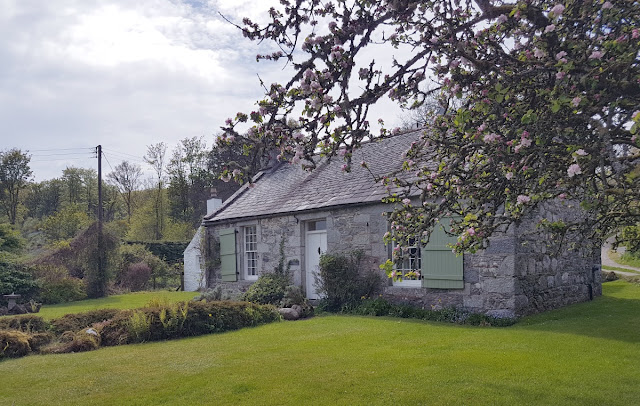Torhouse Stone Circle
Torhouse Stone Circle, also known as the Standing Stones of Torhouse lies in the Bladnoch Valley. 4m west of Wigtown on the B733. Easy to find beside the road.
The stone circle is in an excellent state of preservation. Its 19 stones are graded in height, with a line of three boulders in the centre. This was recorded in 1684 as ‘King Gauldus’s Tomb’, (Galdus being a mythical Scottish king), who fought the Roman invaders and gave his name to Galloway.
Torhouse is a Bronze Age stone circle consisting of some 19 large granite boulders, ranging in height from 0.60m to 1.45m. There are three large upright stones in the centre of the circle known as King Gauldus's Tomb. This type of stone circle is most commonly found in north-east Scotland and is unusual for this area. But may be considered as similar to some found in Cumbria, particularly, Castlerigg.
Two stones stand 40 metres to the south-southeast of the stone circle, one large and the other small, and there is a stone row of three stones 130 metres to the east. There are also surviving remains of several burial cairns, and history records others long removed to build field dykes
In folklore
In the dyke on the south side of the road is a stone with a deep cavity which according to tradition, "the knowing never pass without depositing therein some pebble or gift to pass in peace".
King Galdusis
King Galdusis also associated with the nearby Neolithic tombs of Cairnholy. Near Creetown off the A75.
The name of King Galdus remains strong in local legend and is remembered in these ancient monuments The Galdus that is being honored is thought to be King Corbred II surnamed Galdus and described in The History of Scotland by George Buchanan (1506 - 1582) which records that he began his reign in 76 AD and died in the thirty-fifth year of his rule. This is the Corbredus Galdus or Calgacus who fought against the Roman invasions of Scotland. According to Tacitus (c. AD 56 – c. AD 120) the Roman senator and a historian, he was a chieftain of the Caledonian Confederacy who fought the Roman army of Gnaeus Julius Agricola at the Battle of Mons Graupius in northern Scotland in AD 83 or 84.
Source https://www.transceltic.com/blog/galdus-scottish-king-whose-legend-honored-ancient-monuments
Symson, in his Description of Galloway, written in 1684
"In the high-way betwixt Wigton and Port-Patrick, about three miles westward of Wigton, is a plaine, called the 'Moor of Standing Stones of Torhouse,' in which there is a monument of three large whin-stones (called King Galdus's Tomb,) surrounded, at about twelve foot distance, with nineteen considerable great stones, (but none of them so great as the three first mentioned,) erected in a circumference.
In this moor, and not far form the tomb, are great heaps of small stones, (which the country people call Cairns) supposed by them to be the burial-place of the common soldiers. As also, at several placeds, distant from the monument, are here and there great single stones erected, which are also supposed to be the burial-place of his commanders and men of note." (Symson's MS Account of Galloway, Advocates' Library.)



Comments
Post a Comment